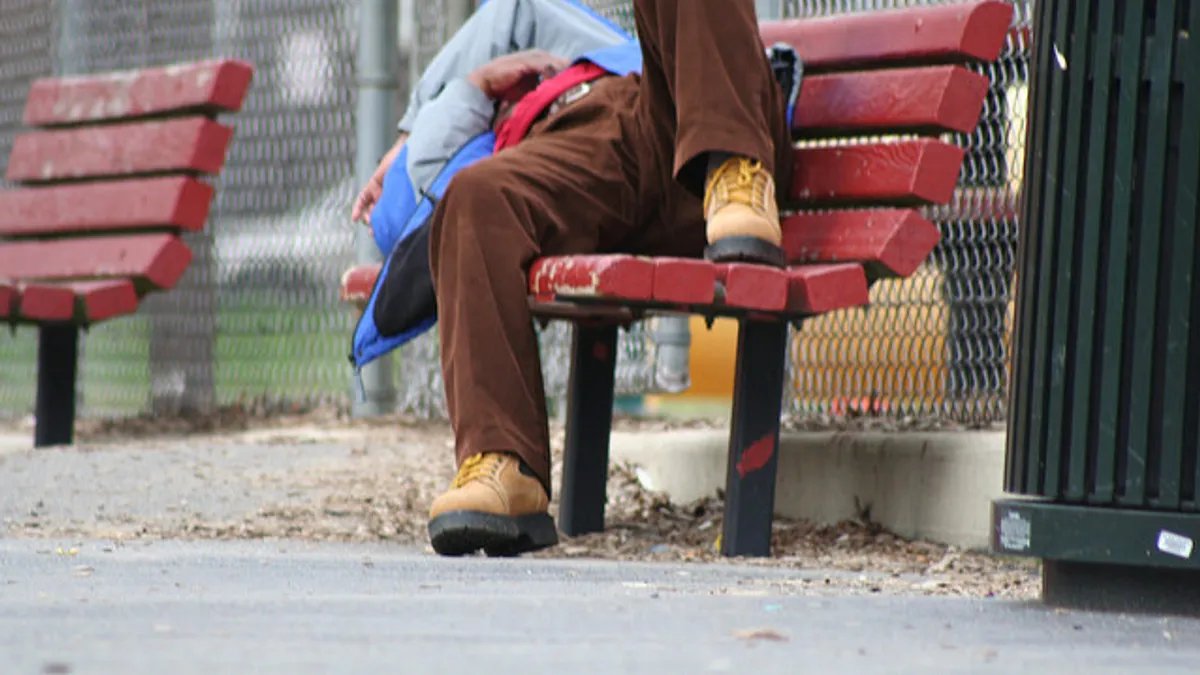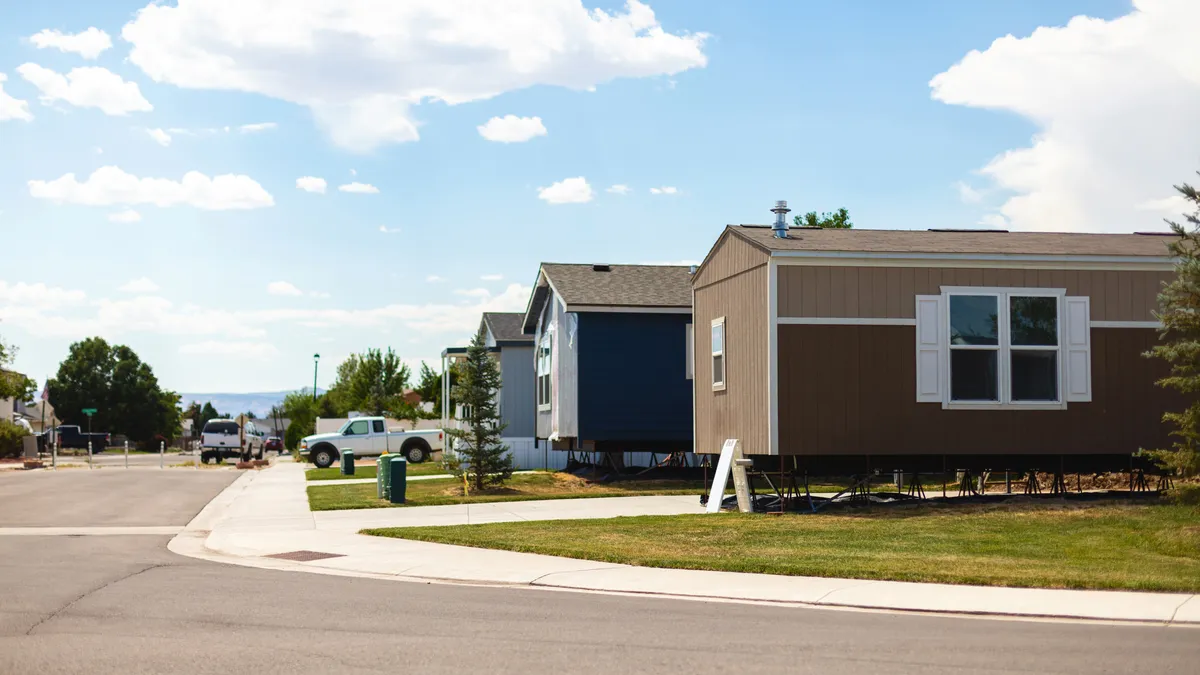Homelessness is a nationally pervasive and tricky problem — and many local governments are scrambling to combat the issue as it slowly increases.
The number of homeless people ticked up slightly last year, and housing experts say the rapidly decreasing supply of affordable housing contributes to the problem. Leaders at the National Alliance to End Homelessness' annual conference this summer frequently addressed the growing housing crisis and discussed problems and solutions related to affordability and availability.
City leaders, nonprofit organizations and various philanthropists are working toward better solutions. Many of those offer holistic approaches, or service-based systems, in which a homeless person's entire situation and path to long-term stable housing is considered, rather than simply providing a bed in a shelter.
Smart Cities Dive compiled some striking data about homelessness in the U.S. to show its impact on cities and the public.
550,996The number of people who experienced homelessness in the U.S. in 2017, as reported during annual point-in-time counts one night each January. Data from across the country is compiled in the U.S. Department of Housing and Urban Development’s (HUD) annual report to Congress.
1%The national homeless population increase from 2016-2017, according to HUD. This is the first increase since 2010.
192,875The number of homeless individuals in the HUD count who were not in a shelter and instead stayed in places considered uninhabitable such as vehicles, tents or on the street.
53%The percentage of all unsheltered, chronically homeless people in America who lived in California in 2017, according to Project HOME. Chronic homelessness on the West Coast has outpaced many other regions of the country. One frequently cited factor is the rapidly increasing cost of living and housing unaffordability in many West Coast cities.
1,657The number of reported hate crimes that housed individuals committed against homeless individuals from 1999-2015, according to a report from the National Coalition for the Homeless.
47%The national increase from 2007-2017 in the number of beds for people currently or previously experiencing homelessness, according to HUD. Permanent supportive housing is the largest growth area, with an 87.6% increase during that time frame, reflecting the trend away from traditional homeless shelters and toward holistic approaches.
44%The number of homeless people who had some income over a 30-day span, according to a 1999 Urban Institute study. The data is aged but homeless advocates indicate similar localized results over the past decade. The federal government cites numbers of closer to 17% employment because it only considers consistent employment over a period of time, not examples such as making money doing one-off jobs. Many people become homeless when they are underemployed and can’t make ends meet, but they still earn some income.
94%The estimated number of homeless people who own cell phones, according to a study conducted in California and published in the Journal of Social Distress and the Homeless. Other studies reached similar conclusions, although the percentages are a bit lower, such as a 2013 study in Virginia that showed 89% mobile phone ownership among the homeless, and another in Oklahoma City in 2016 that showed 76% ownership. Smartphone ownership percentages are much lower, but more consistent, around 55-60%. People may have owned phones before becoming homeless, are provided cell phones through donations or receive them through social programs to check in with case workers. Most rely on free Wi-Fi for communication. Homelessness mitigation programs increasingly rely on technology to administer support and track progress, and homeless individuals use the devices to apply for jobs or job training, find shelters and apply for permanent housing.
$10 millionThe amount Boston Mayor Marty Walsh aims to raise in four years through a new fund to combat chronic homelessness in the region.
$2.5 billionThe amount of funding Congress approved for HUD’s McKinney-Vento Homeless Assistance Grants program in FY 2018. The grants help fund local homeless housing, care and education programs.
5,000The number of housing units new San Francisco Mayor London Breed has pledged to build every year to combat rising rents, and ultimately, the city's notoriously high rate of homelessness. Her budget also includes a one-time $1 million pledge over the next two fiscal years to help fund homeless support facilities.
Editor's note: The number of people who experienced homelessness in the U.S. in 2017 has been altered following the release of the 2018 Annual Homeless Assessment Report (AHAR) to Congress.











